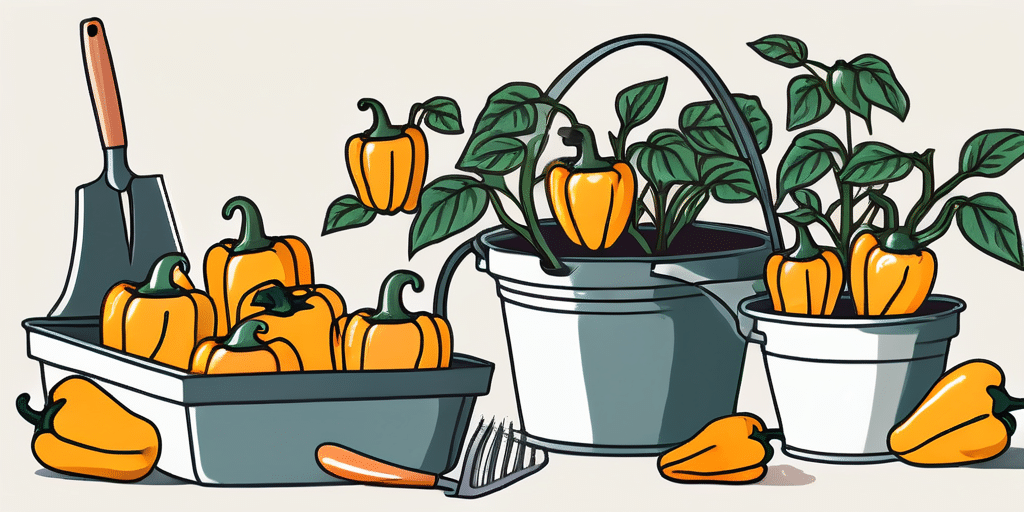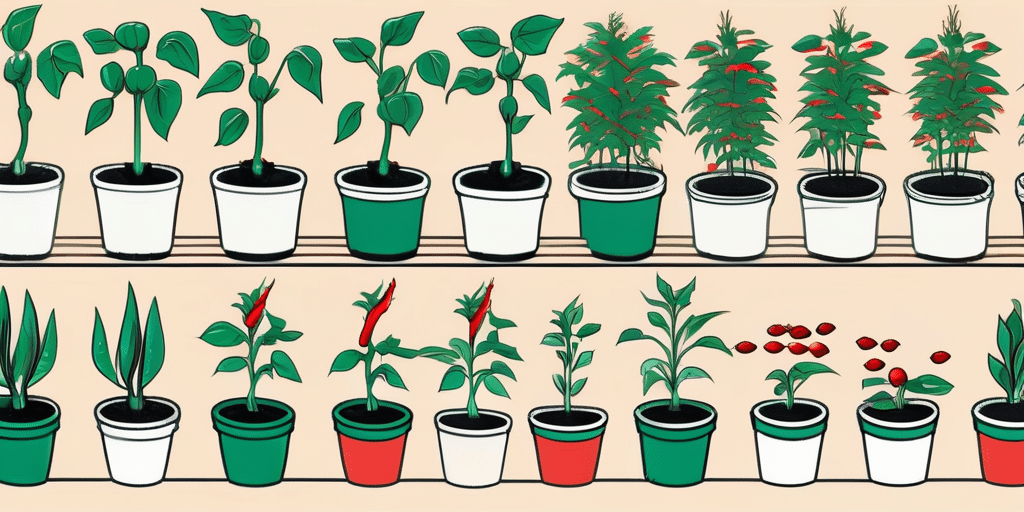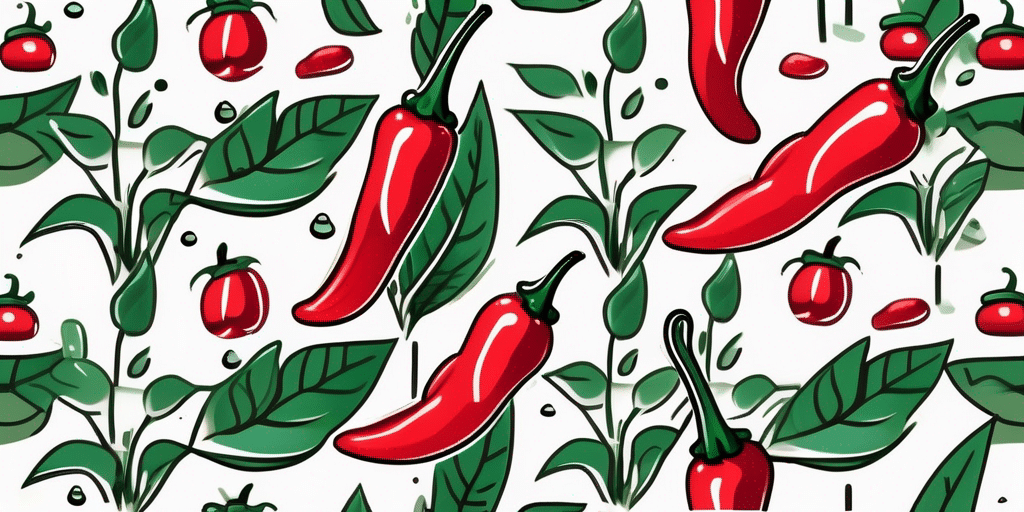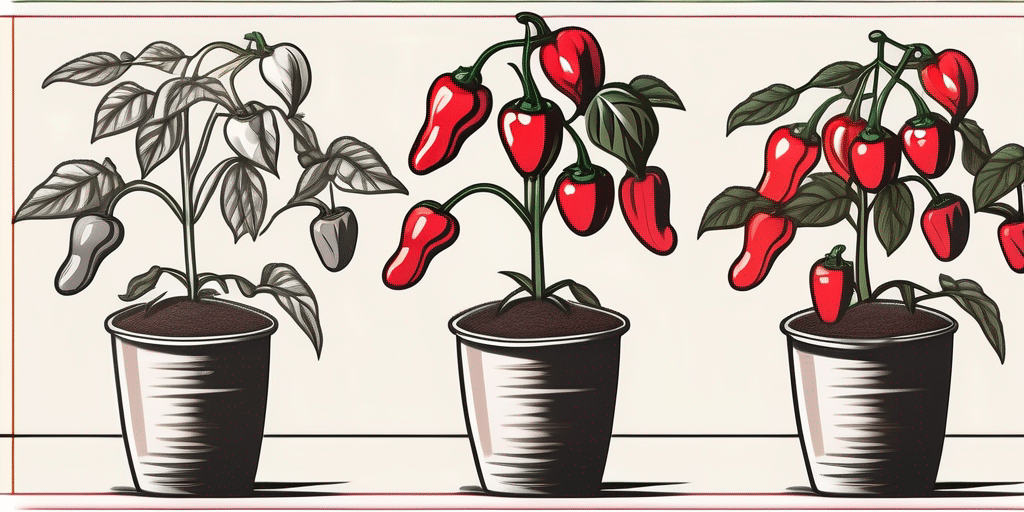Spicy and vibrant, Cherry Bomb peppers are a popular choice for gardeners in Zones 8a and 8b. These zones, which include parts of the southern United States, provide an ideal climate for growing these fiery peppers. In this article, we will explore everything you need to know about growing Cherry Bomb peppers in Zones 8a and 8b, including when to plant them and how to care for them.
Growing Cherry Bomb Peppers in Zones 8a and 8b
Growing Cherry Bomb peppers in Zones 8a and 8b is an exciting adventure that can reward you with a bountiful harvest. These zones have mild winters and hot summers, creating the perfect conditions for these spicy peppers to thrive. Here’s a step-by-step guide to help you get started:
- Choose a sunny location: Cherry Bomb peppers love the sun and require at least six hours of direct sunlight daily. Select a spot in your garden that receives ample sunlight.
- Prepare the soil: Before planting, make sure the soil in your chosen spot is well-draining and rich in organic matter. You can amend the soil with compost to improve its fertility.
- Sow the seeds or transplant seedlings: You have two options when it comes to starting your Cherry Bomb peppers. You can either sow the seeds directly into the soil or start seedlings indoors and transplant them later. If you choose to start seedlings, sow the seeds 6-8 weeks before the last frost date in your area.
- Spacing and depth: If you’re planting seeds directly into the soil, space them about 18-24 inches apart. Cover the seeds with a thin layer (1/4 inch) of soil. If you’re transplanting seedlings, space them 12-18 inches apart.
- Watering and fertilizing: Cherry Bomb peppers need consistent watering to keep the soil evenly moist, especially during hot, dry periods. Avoid overwatering, as it can lead to root rot. Fertilize the plants every 4-6 weeks with a balanced fertilizer to promote healthy growth.
- Pest and disease control: Keep an eye out for common pests like aphids and tomato hornworms. If you notice any signs of pests, use organic pest control methods or consult a local gardening expert for advice. Proper spacing and good air circulation can also help prevent disease.
- Harvesting: Cherry Bomb peppers typically reach maturity in 80-85 days. You can harvest them when they turn bright red and reach their full size, usually around 2-3 inches in diameter. Use a sharp pair of scissors or garden shears to avoid damaging the plant.
Now that you have the basics down, let’s dive a little deeper into the world of Cherry Bomb peppers. These fiery little fruits are known for their intense heat and rich flavor. They pack a punch that can add a burst of spiciness to any dish, from salsas to stir-fries.
One interesting fact about Cherry Bomb peppers is that they belong to the Capsicum annuum species, which includes other popular pepper varieties like jalapenos and bell peppers. However, unlike their milder relatives, Cherry Bomb peppers are on the hotter end of the spectrum, measuring around 5,000-10,000 Scoville Heat Units (SHU).
When it comes to culinary uses, Cherry Bomb peppers are incredibly versatile. You can use them fresh in salads, stuff them with cheese or meat for a delicious appetizer, or even pickle them for a tangy and spicy addition to sandwiches and charcuterie boards. Their vibrant red color also makes them a visually appealing garnish.
Aside from their culinary appeal, Cherry Bomb peppers also have some health benefits. Like other peppers, they are rich in vitamins A and C, as well as antioxidants that can help boost your immune system and promote overall well-being. The capsaicin found in Cherry Bomb peppers has also been linked to potential pain relief and improved metabolism.
So, as you embark on your journey of growing Cherry Bomb peppers in Zones 8a and 8b, remember that you’re not just cultivating a spicy ingredient for your kitchen, but also a fascinating plant with a rich history and a range of culinary and health benefits. Enjoy the process and savor the rewards of your labor as you harvest these fiery gems from your garden!
Climate & Hardiness in Zones 8a and 8b
Zones 8a and 8b have a similar climate, characterized by mild winters and hot summers. The average minimum winter temperatures range from 10 to 20 degrees Fahrenheit in Zone 8a and from 20 to 25 degrees Fahrenheit in Zone 8b. These relatively warm temperatures make these zones ideal for growing Cherry Bomb peppers, which are sensitive to frost.
Furthermore, the long growing season in Zones 8a and 8b provides ample opportunity for a variety of crops to thrive. With an average frost-free period of 200 days or more, gardeners in these zones can cultivate a wide range of fruits and vegetables, including tomatoes, cucumbers, and okra. The warm summer temperatures, often exceeding 90 degrees Fahrenheit, create optimal conditions for heat-loving plants to flourish.
Moreover, the mild winters in Zones 8a and 8b offer gardeners the chance to experiment with overwintering certain crops, such as kale and Brussels sprouts, which can withstand the occasional light frost. This ability to extend the growing season into the cooler months allows for a diverse and continuous harvest throughout the year. Additionally, the moderate rainfall in these zones, typically ranging from 30 to 40 inches annually, provides sufficient moisture for crops without overwhelming them, making supplemental irrigation rarely necessary.
When to Plant Cherry Bomb Peppers in Zones 8a and 8b
The timing of planting Cherry Bomb peppers in Zones 8a and 8b is crucial for a successful harvest. Start your seeds indoors or plant them directly into the soil after the danger of frost has passed. In Zones 8a and 8b, this is generally around late March or early April. Be sure to check the local frost dates for the most accurate timing.
When to Harvest or Pick Cherry Bomb Peppers in Zones 8a and 8b
Patience is key when it comes to harvesting Cherry Bomb peppers. These peppers start off green but gradually turn bright red as they mature. Wait until they reach their full size and color before harvesting. In Zones 8a and 8b, you can expect to start harvesting your peppers from late summer to early fall, around September or October.
Frequently Asked Questions
Here are some frequently asked questions about growing Cherry Bomb peppers in Zones 8a and 8b:
- Q: Can I grow Cherry Bomb peppers in containers?
- A: Yes, Cherry Bomb peppers can be grown in containers as long as they have sufficient sunlight, well-draining soil, and regular watering.
- Q: How spicy are Cherry Bomb peppers?
- A: Cherry Bomb peppers are moderately spicy, measuring around 2,500-5,000 Scoville heat units. They provide a pleasant heat without being overly intense.
- Q: Can I save Cherry Bomb pepper seeds for future planting?
- A: Yes, you can save Cherry Bomb pepper seeds for future planting. Simply dry the seeds thoroughly and store them in a cool, dry place until you’re ready to plant them.
Now that you have a good understanding of how to grow Cherry Bomb peppers in Zones 8a and 8b, it’s time to roll up your sleeves and start planting. With the right care and attention, you’ll soon be enjoying the vibrant colors and spicy flavors of these delicious peppers. Happy gardening!
Join the How to Grow Everything Community
Ready to turn up the heat in your garden with Cherry Bomb peppers? Don’t stop there! Subscribe for free to How to Grow Everything and learn how to build the garden of your dreams. Receive personalized gardening advice tailored to your Zone 8a or 8b location, experience level, and interests. Our family is dedicated to helping you grow everything from spicy peppers to succulent tomatoes, with the best gardening tips and special offers delivered straight to your inbox. Join our community of garden enthusiasts and enjoy thousands of free growing and gardening articles, all 100% free. Happy gardening!






